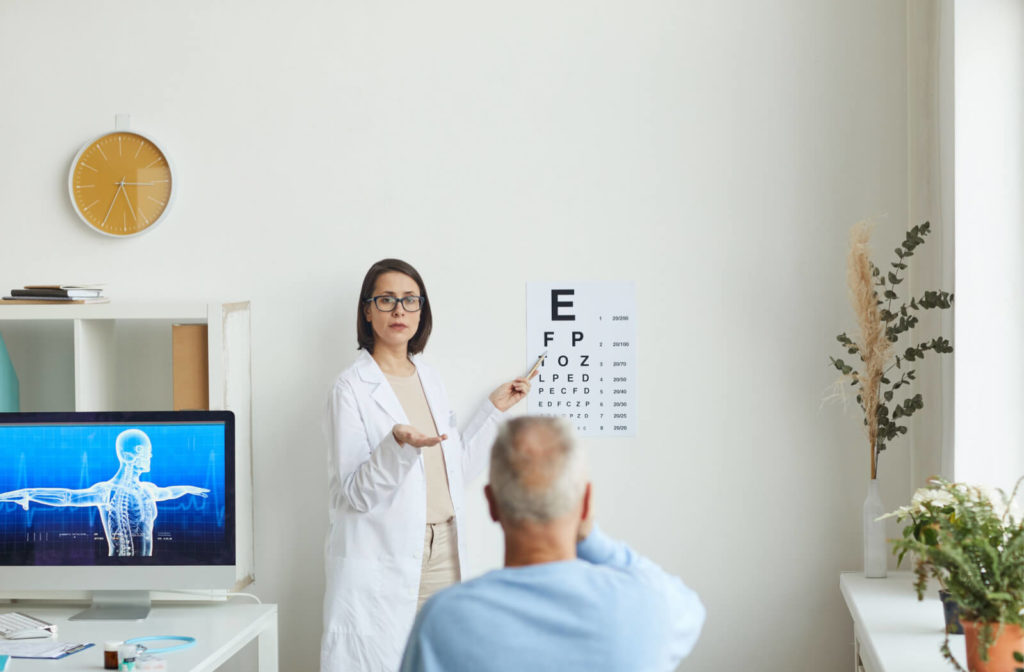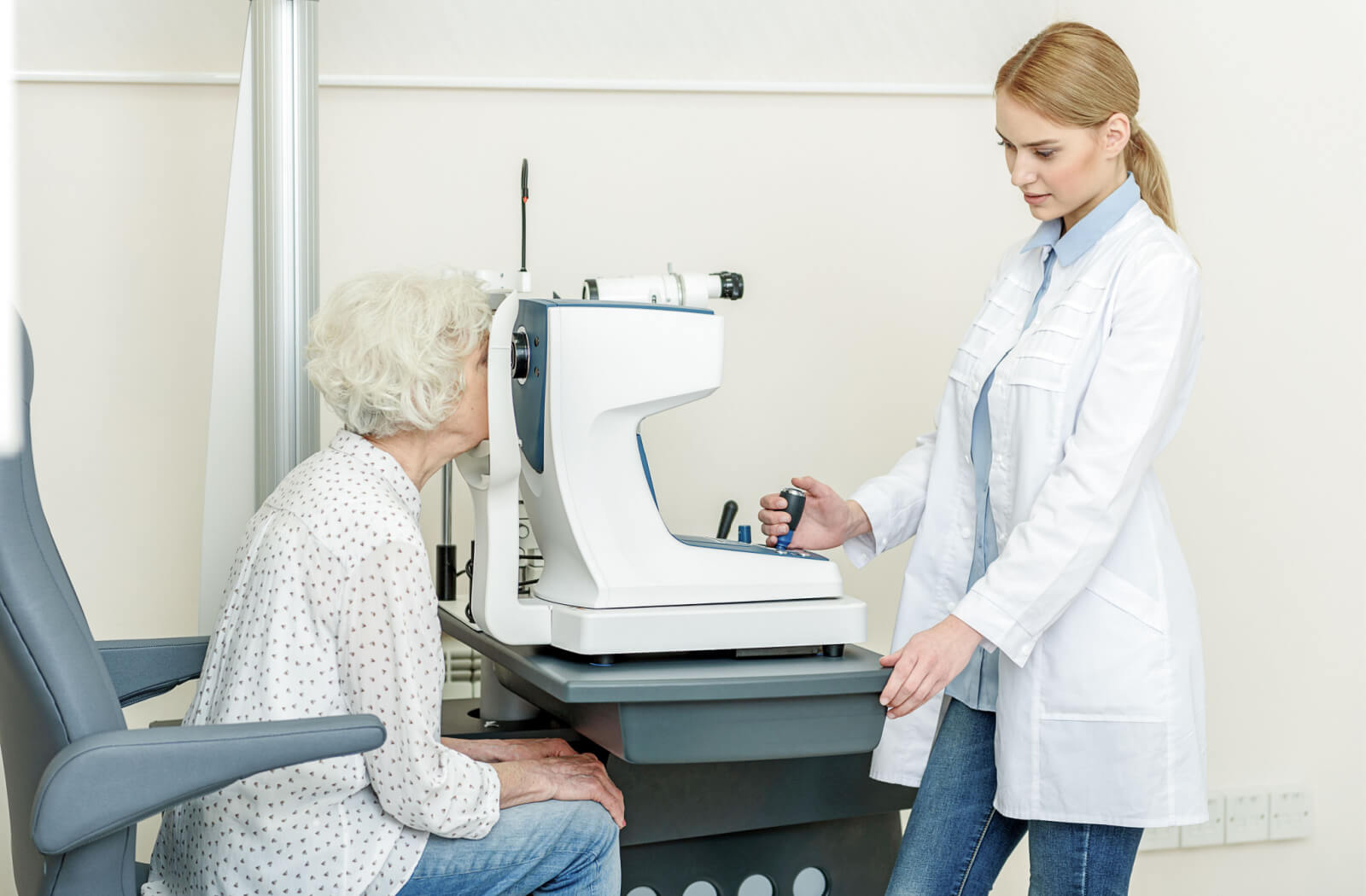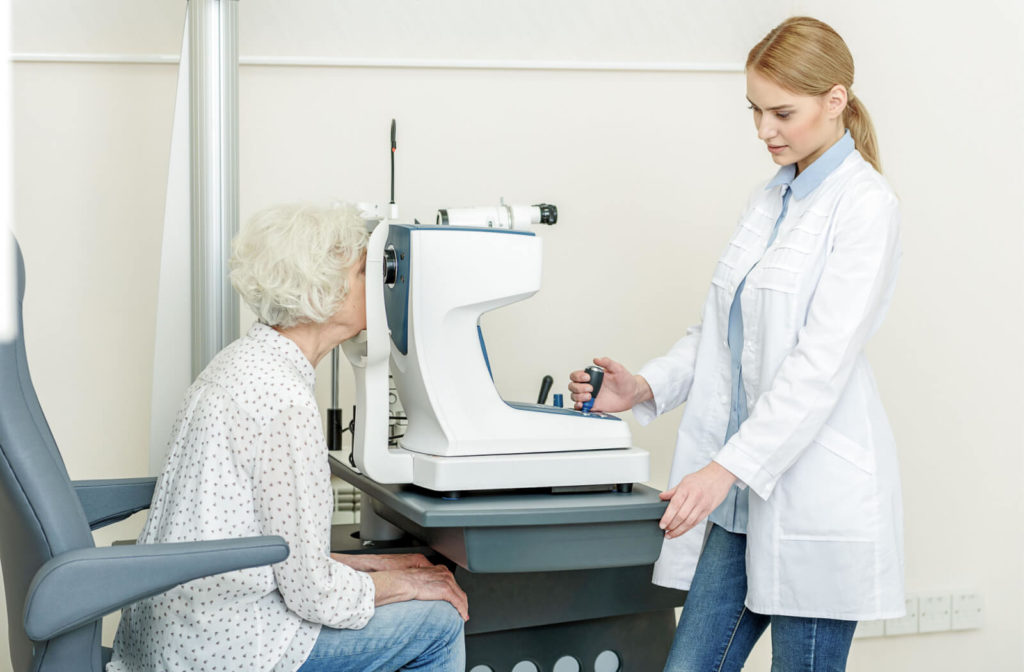If you’ve recently been diagnosed with glaucoma, you’re not alone. More than 80 million people worldwide are in the same position. The good thing is that its prevalence has allowed for the discovery of methods to slow glaucoma progression.
Early detection is key, and since around 50% of those with glaucoma don’t even know they have it, regular eye exams are an important step in your ocular health from this disease.
Before we discuss how to prevent glaucoma from worsening, let’s look at what glaucoma is.
What Is Glaucoma?
Glaucoma is an eye disease that causes damage to the optic nerve. This damage is usually due to an increase in eye pressure, which is caused by a buildup of fluid in the eyes.
Because the optic nerve transmits visual information from your eyes to your brain, any damage to it can be serious, resulting in irreversible vision loss or blindness if it’s not treated.
Glaucoma can affect people of any age, but it is more common in seniors and is one of the leading causes of vision loss in those over 65. People in the early stages of most types of glaucoma may not notice any symptoms, which makes it difficult to determine if you have glaucoma without consulting an eye doctor.
Many are unaware that there are different types of glaucoma. Open-angle glaucoma and chronic angle-closure glaucoma are the most common types of this condition.
Acute angle-closure glaucoma occurs suddenly, presenting with severe symptoms and is a medical emergency requiring immediate intervention.
Open-Angle Glaucoma
- Patchy blind spots in peripheral or central vision (usually in both eyes)
- Tunnel vision (in advanced stages)
Chronic Angle-Closure Glaucoma
- Eye redness
- Discomfort
- Blurred vision
- Intermittent headache that lessens with sleep
Acute Angle-Closure Glaucoma
- Severe headache
- Eye pain & redness
- Nausea
- Vomiting
- Blurred vision
- Halos around lights

How to Slow Glaucoma Progression
Optometrists don’t yet understand how to prevent glaucoma from developing in the first place. But, there are ways to slow or prevent glaucoma-related vision loss.
Regular Eye Exams
The best thing you can do is schedule regular eye exams with your eye doctor so early signs of glaucoma can be caught. The frequency that you will need to complete glaucoma screenings varies depending on your age and demographic.
If you have any other medical conditions, you may need to come in more frequently. Speak with your doctor about the type of schedule they recommend for you and what they recommend to prevent glaucoma from developing or worsening.
Medicated Eye Drops
Prescription eye drops are often the first step in glaucoma treatment. Some drops reduce internal eye pressure by improving fluid drainage in the eye. Others reduce the amount of fluid produced by your eye.
To manage your glaucoma, you may need to use a variety of eye drops throughout the day. So it’s important to maintain a schedule to help ensure you take your medication on time.
Medication
Eye drops alone may not be enough to reduce your eye pressure to the desired level. Your eye doctor may also prescribe oral medication to work in conjunction with the eye drops.
Laser Therapy & Surgery
Laser therapy is a simple, in-office procedure that uses lasers to help the eye drain fluid. You may require more than one session, and you may need to continue taking glaucoma medication even after the procedure.
For more advanced cases of glaucoma or for those who aren’t responding to drops, medication, or laser therapy, you may require surgery. There are different surgeries, but they all revolve around helping your eyes drain excess fluid to prevent increased pressure.
Healthy Eating
You know how important healthy eating is for your body and mind, but your diet also has a significant impact on your eye pressure. A general rule of thumb is to avoid all foods that raise insulin levels, such as:
- Pasta
- Pastries
- Sugary foods
- Coffee
It’s better to consume foods that contain important nutrients like vitamins A, B, C, zinc, and Omega-3 fatty acids, which help lower eye pressure. Examples of these foods include:
- Leafy & dark-green vegetables
- Carrots
- Red pepper
- Tomatoes
- Apples
- Oranges
- Lemons
- Green cabbage
- Eggs
- Fish
- Cheese
Reduce Stress
High-stress levels and emotional trauma have been shown to fast-track glaucoma progression. So an essential step in managing your glaucoma is to try to reduce stress in your life. Learning to relax can have a significant impact on your overall health. High levels of stress can cause high blood pressure and an increase in internal eye pressure.
Exercise (Carefully)
Intense exercise that raises your heart rate can also cause an increase in your eye pressure. Brisk walking and moderate-intensity exercise can lower eye pressure and improve your overall health.
These types of exercises include:
- Walking
- Swimming
- Biking
Communicate with Your Optometrist
While healthy habits can help lower your risk of glaucoma, early detection is the most effective way to avoid glaucoma-related vision loss.
If you or a loved one is at risk for glaucoma or are due for an annual eye exam, please call us for an appointment. Our team has extensive experience diagnosing and treating glaucoma and can assist you in maintaining clear vision.



